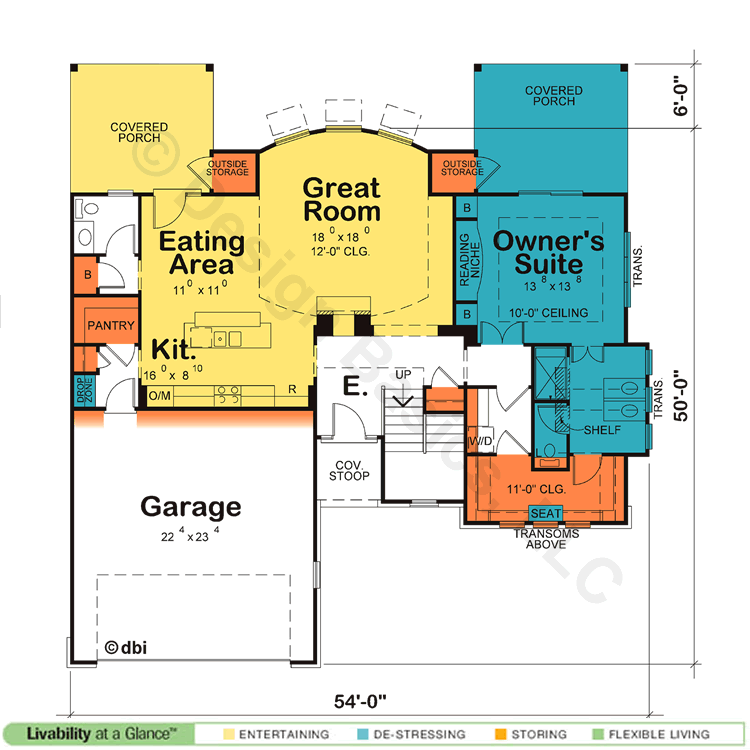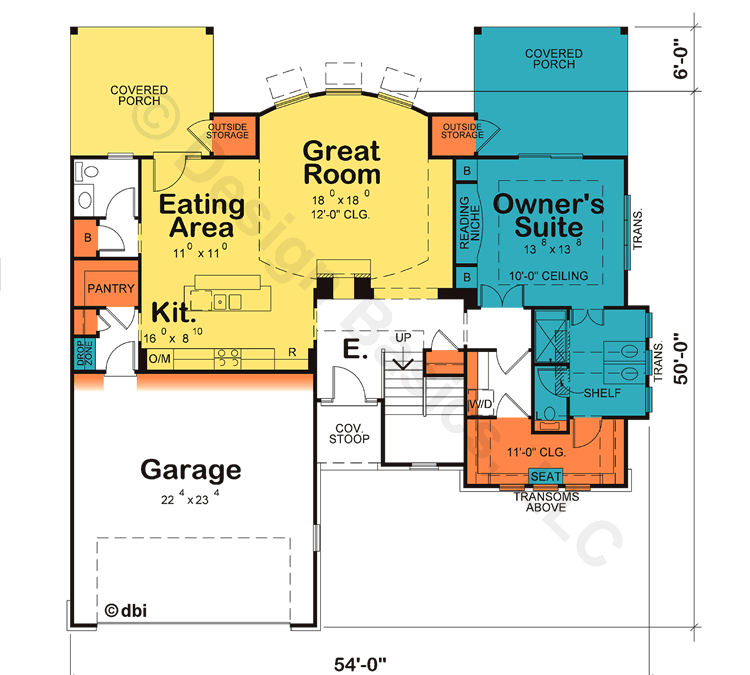Of all the ways builders try to differentiate themselves from the competition, one of the most underutilized is being known for building healthier homes. Having a home free from outside noise betters our chances for rest, promotes concentration, reduces irritability, and has been shown to have a positive impact on our mental health. Properly designed lighting lowers body stress and eyestrain, improving learning and behavior. And, according to the American College of Allergy, Asthma & Immunology, half of all illnesses are either caused by, or aggravated by, polluted indoor air.
Do Not Disturb
Few things in life are as important to our physical and mental health as a good night’s sleep. According to a study published in the Journal of Occupational and Environmental medicine, environmental noise can impact the mental health of children. In the same study, researchers found that environmental noise significantly impacted students’ academic performance, their social behavior, and how easily they became distracted.
Since most sounds travel through the air, tight-fitting doors and windows along with advanced air sealing measures, much of the unwanted clatter that goes on outside cannot be heard inside the home. Soft-closing cabinet doors, along with quiet appliances, garbage disposals, bath fans, and furnaces reduce indoor noise even further. Eleven- or twelve-foot high walls in a great room, as opposed to a full two-story ceiling, reduces annoying echoes.
Suggest a flex space in the home purposed as the “wellness area” – this could be for prayer/meditation or reading for de-stressing. Alternately, this might be an exercise area. Rapidly developing technology coupled with the Affordable Care Act mean elderly home buyers and individuals with ailments such as diabetes need a place for home health monitoring.
Lights Up
Windows not only connect us to the world around us, they’re very important for health. Yet, most people underestimate the importance of natural light. According to Dr. John Ott, the UV rays in natural light actually help our bodies absorb calcium, reduce cholesterol, and lower blood pressure. Careful placement and sizing of windows can usher in more daylight. Rooms with windows on two sides amplify sunlight, an especially important consideration for north-facing rooms. Skylights, due to their angled orientation to the sun, allow three times as much sunlight into the home as a similar-size window in a vertical wall.
Glass block or awning windows placed above the backsplash can bring more daylight into kitchens. Open design concepts, transom windows between living spaces with walls, and even lighter interior colors all increase light levels in the home, known to reduce eyestrain, headaches, and fatigue. Numerous studies have shown that students learn faster, are happier, and experience fewer absences in environments with higher levels of daylight. Bathrooms, with limited opportunity for windows, can be designed to take maximum advantage of mirrors that reflect the available natural light.
Equally important is increasing levels of artificial lighting in the home. Due to the yellowing and hardening of our eyes’ lenses as we age, 60-year old individuals only “see” about half of the light levels of their 20-year old counterparts. The number of lighting fixtures, their placement, and light bulb “brightness” all come into play.
Achoo!
With four of every ten households having one or more members suffering from asthma or allergies, building healthier homes may be just the prescription Americans need to breathe a little easier.
The Centers for Disease Control reports that approximately 26 million Americans suffer from asthma and 50 million more from allergies. Building a very ‘tight,’ energy efficient home helps control the intrusion of most allergens, mold, bacteria, and viruses from entering the home, but compounds the potential for some indoor air quality problems as airborne pollutants from household chemicals and cooking can become trapped inside the home. It is critical that fresh air is brought into the home at a controlled rate, first passing through advanced filtration/purification equipment that traps and destroys airborne pollutants before being circulated through the house. Potentially stale or polluted air is also exhausted from the home—expelling odors and airborne germs.
The average 1,500 sq. ft. home generates 40 pounds of dust per year and each ounce of dust can contain thousands of dust mites. Dust mites are particularly problematic for allergy and asthma sufferers. Carpeting is a haven for dust mites, compared to easy-to-clean hard surface flooring. Dust mites thrive in warm, moist environments, but they die when humidity drops below 40%. Be sure to explain that the use of air conditioning as well as bath and kitchen exhaust fans is important in the battle against dust mites.
That “new home smell” is actually related to unhealthy off-gassing and volatile organic compounds (VOCs). Low- or zero-VOC products selected for the construction of the home is another wise choice. Finally, radon is the second leading cause of lung cancer, accounting for over 20,000 deaths annually according the U.S. Surgeon General. While radon-resistant new construction is required in some areas, homes being built in U.S. EPA Radon Zones 1 and 2 are strong candidates for a radon mitigation system.
It All Begins With a Plan
A first step is to find a home plan that meets your needs and can easily incorporate these healthier home ideas. Finding a plan with high levels of natural light is a great place to start!

The Gainsville (#6651) – Features windows on multiple sides of most rooms.
The Sunset Gable (#42231V) – Skylights provide welcome sunlight in the family room while maintaining a wall for furniture and artwork.
The Pinnacle (#3284) – Note that windows in kitchen between backsplash and upper cabinets balance the need for privacy and natural light.
The Draper (#50031) – An owner’s suite bath with abundant natural light at the vanities (see plan at right).
